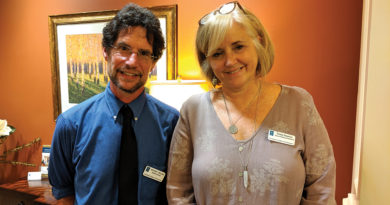Pandemic Has Accelerated Inevitable Technological Progress
What’s Next in Health Education
By Marie Meckel, Kathleen Menard, Susan McDiarmid, and Theresa Riethle
Despite the complexities that COVID-19 has brought to healthcare education, the trajectory from traditional models to hybrid or virtual experiences was inevitable. Today’s technology allows healthcare educators to transcend geography, which widens access to health education in all segments of the population despite location, economic status, and race. The pandemic also revealed the vulnerabilities of underrepresented minorities.
These challenges caused many educators to pause to re-evaluate and readapt to how we teach and develop medical curriculum. Incorporating technology through virtual learning experiences while focusing on how social determinants of health impact patient care and outcomes are two areas of focus in the future of healthcare education.
“By incorporating technology into healthcare education, medical learners will be better prepared for clinical practice.”
Health programs can integrate in-person and remote simulation experiences; these include the traditional simulation lab consisting of realistic mannequins where learners can develop clinical skills in a safe setting without patient harm. Additional virtual experiences include a wide array of interactive patient-encounter portals where learners can conduct histories, perform physical examinations, order and interpret diagnostic tests, develop assessments and treatment plans, all while documenting patient records and receiving coaching and feedback every step of the way.
Live rounding with certified medical providers has also enabled learners to experience traditional hospital rounding from wherever they are in an interactive manner. Even surgical experiences can be supplemented with high-definition surgical videos and medical lectures from subject-matter experts.
While none of these experiences will replace the need for traditional hands-on learning, they can provide learners with unique education experiences that directly correlate to what is seen in clinical practice. With the increase in telehealth visits, medical learners are now equipped to adapt to these visits, delivering care in a better and more effective manner.
Technology is intertwined into healthcare today as seen with diagnostic imaging, robotic surgery, and electronic health records. By incorporating technology into healthcare education, medical learners will be better prepared for clinical practice. The virtual experiences will also develop independent and critical thinking, thus making it easier to adapt to innovations and changing patterns of illness and health systems.
In order to provide equitable, high-quality healthcare to all patients, we must include social determinants of health in the curriculum. These include socioeconomic status, education, neighborhood and physical environment, employment, and social-support networks, as well as access to healthcare.
This charge became more evident with the pandemic, as we have seen its profound impact on underrepresented minorities. It would be a disservice to future providers to ignore the current healthcare disparities in these populations. Addressing these determinants is not only important for improving overall health, but also for reducing health disparities that are often rooted in social and economic disadvantages.
Healthcare providers of the future will not necessarily be those who have a traditional classroom education, but will be those who know how to use, implement, and apply technology in healthcare systems and provide high-quality healthcare to all patients.
Marie Meckel, MS, MPH, MMSc, PA-C; Kathleen Menard, MS, PA-C; Susan McDiarmid, MS, PA-C; and Theresa Riethle, MS, PA-C are physician assistant faculty members at Bay Path University.




